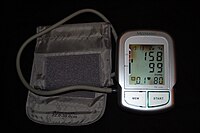
Altered resting cerebral blood flow specific to patients with diabetic retinopathy revealed by arterial spin labeling perfusion magnetic resonance imaging
Sign Up to like & getrecommendations! Published in 2020 at "Acta Radiologica"
DOI: 10.1177/0284185120932391
Abstract: Background Previous neuroimaging studies have shown that patients with diabetic retinopathy (DR) were accompanied by abnormalities in cerebral functional and structural architecture, whereas the resting cerebral blood flow (CBF) alterations in patients with DR are… read more here.
Keywords: blood flow; resting cerebral; diabetic retinopathy; patients diabetic ... See more keywords

Differences in cerebral blood flow measurement using arterial spin labeling MRI between patients with moyamoya disease and patients with arteriosclerotic cerebrovascular disease
Sign Up to like & getrecommendations! Published in 2022 at "Acta Radiologica"
DOI: 10.1177/02841851211069245
Abstract: Background It is unclear whether the accuracy of arterial spin labeling (ASL) magnetic resonance imaging (MRI) is the same between moyamoya disease (MMD), which is known to have markedly elevated cerebral blood volume (CBV), and… read more here.
Keywords: cerebral blood; cbf; disease; stenosis ... See more keywords

Application of Three-Dimensional Pseudocontinuous Arterial Spin Labeling Perfusion Imaging in the Brains of Children With Autism
Sign Up to like & getrecommendations! Published in 2022 at "Frontiers in Neurology"
DOI: 10.3389/fneur.2022.851430
Abstract: Objective To explore the application of three-dimensional pseudocontinuous arterial spin labeling (3D-PCASL) perfusion imaging in the brains of children with autism and to understand the characteristics of cerebral blood perfusion in children with autism. Methods… read more here.
Keywords: three dimensional; application three; cbf values; perfusion ... See more keywords

A diagnostic index based on pseudo-continuous arterial spin labeling and T1-mapping improves efficacy in discriminating Alzheimer’s disease from normal cognition
Sign Up to like & getrecommendations! Published in 2022 at "Frontiers in Neuroscience"
DOI: 10.3389/fnins.2022.974651
Abstract: Background Pseudo-continuous arterial spin labeling (pCASL) is widely used to quantify cerebral blood flow (CBF) abnormalities in patients with Alzheimer’s disease (AD). T1-mapping techniques assess microstructural characteristics in various pathologic changes, but their application in… read more here.
Keywords: alzheimer disease; arterial spin; spin labeling; continuous arterial ... See more keywords